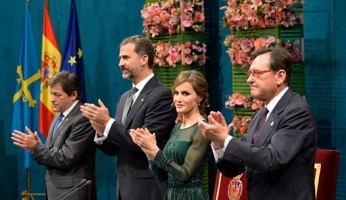What is leadership?
We explain what leadership is and what it means to exercise as a leader. Are leaders born or made? In addition, the different types of leadership.
-
What is leadership?
Leadership is a set of skills that make a person fit to perform tasks as a leader . They can lead not only tasks, but also ideologies or they can be a model in which many are inspired by their work. Generally, a leader has the ability to motivate people because he has emotional characteristics that generate empathy in his followers.
The set of skills that are necessary to exercise as a leader are of the managerial or managerial type and with them the leader will generate a positive influence on a certain group of people , so that, for example, they work with more enthusiasm , receive indications to do a task, encourage them, and so on. It is also valid to say that a leader is the one who takes the initiative to start doing something, who encourages, manages, evaluates.
Leadership implies an unequal appropriation of power , since the members of the group will only comply with the orders, although they may help make decisions by giving their point of view and collaborating in other ways. The term leadership can also be used to designate a group of leaders.
There are psychological studies that affirm that people look for a leader who is similar to our parents or to those who have played this role, since they are the first authority figure we know.
Leader can also be one who has characteristics that make him a famous person or to point to a person who imposes respect . A leader stands out among others and has qualities that give him the superiority to play the role he has. The leader must excel in some aspect (titles, experience, knowledge , performance, etc.) so that he looks “better” to the rest of his peers.
-
Other definitions of leadership

- Richard L. Daft defines in his book “The experience of leadership” to leadership as a relationship of influence that exists between a leader and his followers in which it is intended to generate change and reach real results that reflect the shared purposes. The elements of this relationship are: leader, influence, intention, responsibility , change, shared purpose and followers.
- Another author, Arieu, speaks of leadership, stating that the person who has the ability to inspire and include others in that dream is a leader.
- Administration in business leadership is the action of carrying out an activity (as a project ) effectively and efficiently within an organization .
-
Are leaders born or made?
Both cases may occur. There are people born with qualities to be a born leader (such as empathy, sympathy, sociability, intuition , and then they add to these characteristics knowledge acquired throughout their lives ) and there are those who learn what a leader has to have and They adapt to situations where they would like to have a role or be a part.
-
The power of the leader

The leader must exercise his power by also thinking as one more member . At some point the power emanating from the leader is demanded by the members of that group, they need someone to guide and order them. The power of the leader can be used in two ways, on the one hand to punish the followers and on the other to reward them.
A leader is held in that position and has the power that he has only while his followers (or superiors if they exist) consider that he is the best person that exists at that time to meet needs and while he is the one who gives more than what the followers give . The power that the leader has is not useful if he is not serving the followers, it is assumed that the one who exercises the leadership is a public servant in some way , otherwise he will not be performing correctly as one.
-
What does being a leader mean?
According to Colin Powell there are four implications that go hand in hand with the role of the leader. These are:
- In the first place, differ with the thinking of most people, but this thought must be defended knowing how to argue and debate.
- In the second place, we must know that when we no longer have problems , it is because we have stopped seeing ourselves as leaders.
- Third, you have to see the other professionals as a challenge.
- Finally, you have to know that being a leader means having a very lonely position.
-
Types of leadership

There are several types of leadership that differ by the various characteristics. There are experts who affirm this and there are those who raise, instead, that leadership is only one and that as leaders are people with different characteristics that makes them different. According to Max Weber there are three different types of leaders:
- The charismatic : He is able to excite people and is chosen by that characteristic, the problem is that they tend to believe more in themselves than in their followers.
- The traditional : It is that person who inherits power, usually because it belongs to an elite family group or high social class) and third.
- The legitimate : Acquires that power through legal paths, the opposite is the “illegitimate” power, who enjoys this power obtained through illegal means.
There are also more classifications according to other criteria. To get started,
- Depending on the formality of your choice , we have formal or informal leaders.
- According to the relationship between the leader and his followers , we have dictator leadership, autocratic, democratic leadership, onomatopoeic leadership, paternalistic leadership and finally, liberal leadership.
- Depending on the type of influence the leader exerts on the followers , there is transactional, transformational, authentic, lateral, longitudinal and work leadership.
-
Developer leadership
Within this leadership class there are five types of leaders:
- The autocrat : Who has full responsibility, makes all decisions, directs, initiates actions and exercises control over others.
- The entrepreneur : He has a participatory style, uses the consultation to exercise leadership but still he gives the guidelines and does not give up his right to make decisions.
- The liberal leader : He delegates the power to make decisions.
- The proactive leader : Promotes the development of people who are his followers.
- The bold leader : It relates to many people and institutions, is critical, positive and very persuasive, consults their peers to decide.





